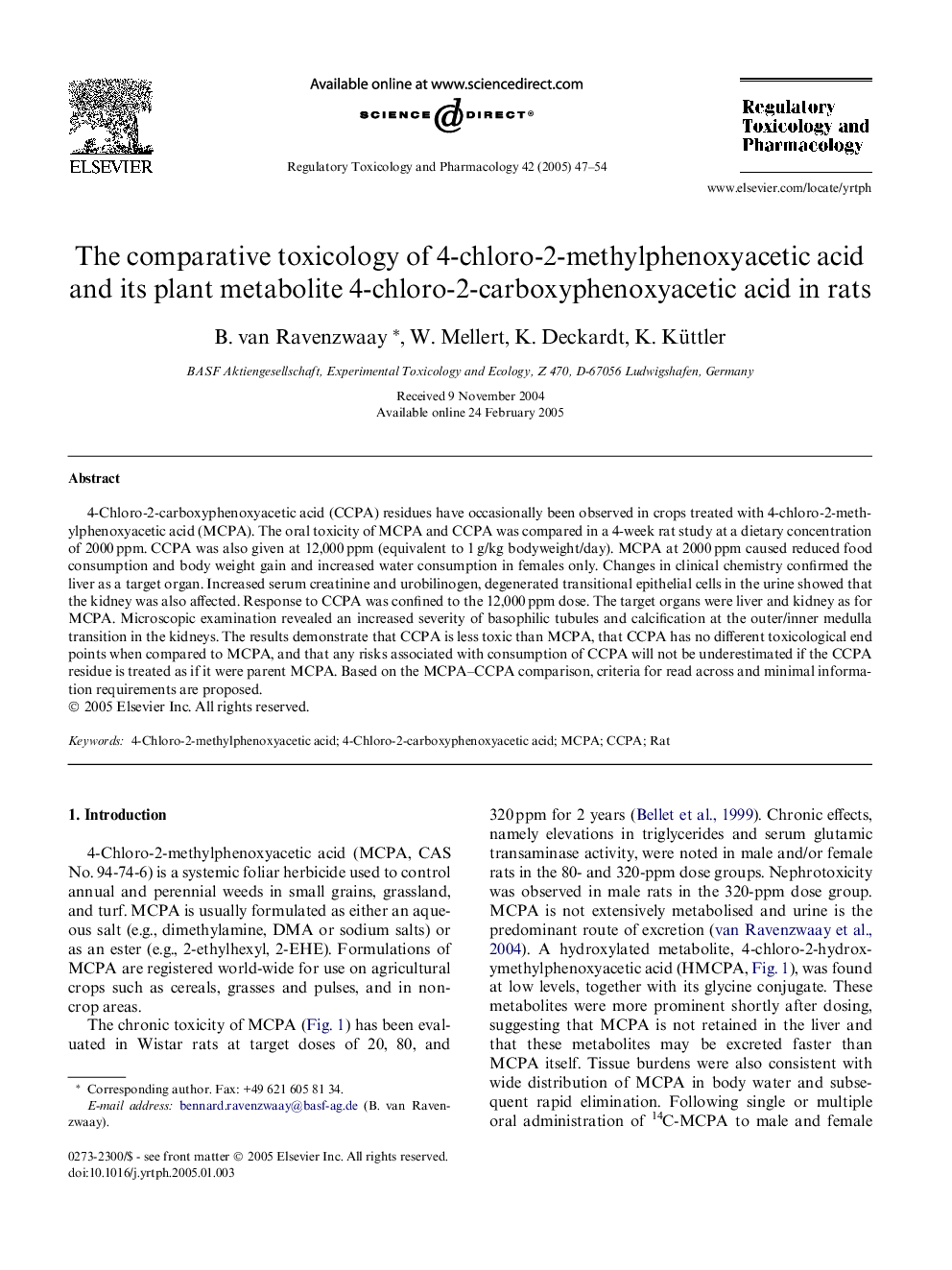| Article ID | Journal | Published Year | Pages | File Type |
|---|---|---|---|---|
| 9033607 | Regulatory Toxicology and Pharmacology | 2005 | 8 Pages |
Abstract
4-Chloro-2-carboxyphenoxyacetic acid (CCPA) residues have occasionally been observed in crops treated with 4-chloro-2-methylphenoxyacetic acid (MCPA). The oral toxicity of MCPA and CCPA was compared in a 4-week rat study at a dietary concentration of 2000Â ppm. CCPA was also given at 12,000Â ppm (equivalent to 1Â g/kg bodyweight/day). MCPA at 2000Â ppm caused reduced food consumption and body weight gain and increased water consumption in females only. Changes in clinical chemistry confirmed the liver as a target organ. Increased serum creatinine and urobilinogen, degenerated transitional epithelial cells in the urine showed that the kidney was also affected. Response to CCPA was confined to the 12,000Â ppm dose. The target organs were liver and kidney as for MCPA. Microscopic examination revealed an increased severity of basophilic tubules and calcification at the outer/inner medulla transition in the kidneys. The results demonstrate that CCPA is less toxic than MCPA, that CCPA has no different toxicological end points when compared to MCPA, and that any risks associated with consumption of CCPA will not be underestimated if the CCPA residue is treated as if it were parent MCPA. Based on the MCPA-CCPA comparison, criteria for read across and minimal information requirements are proposed.
Related Topics
Life Sciences
Environmental Science
Health, Toxicology and Mutagenesis
Authors
B. van Ravenzwaay, W. Mellert, K. Deckardt, K. Küttler,
